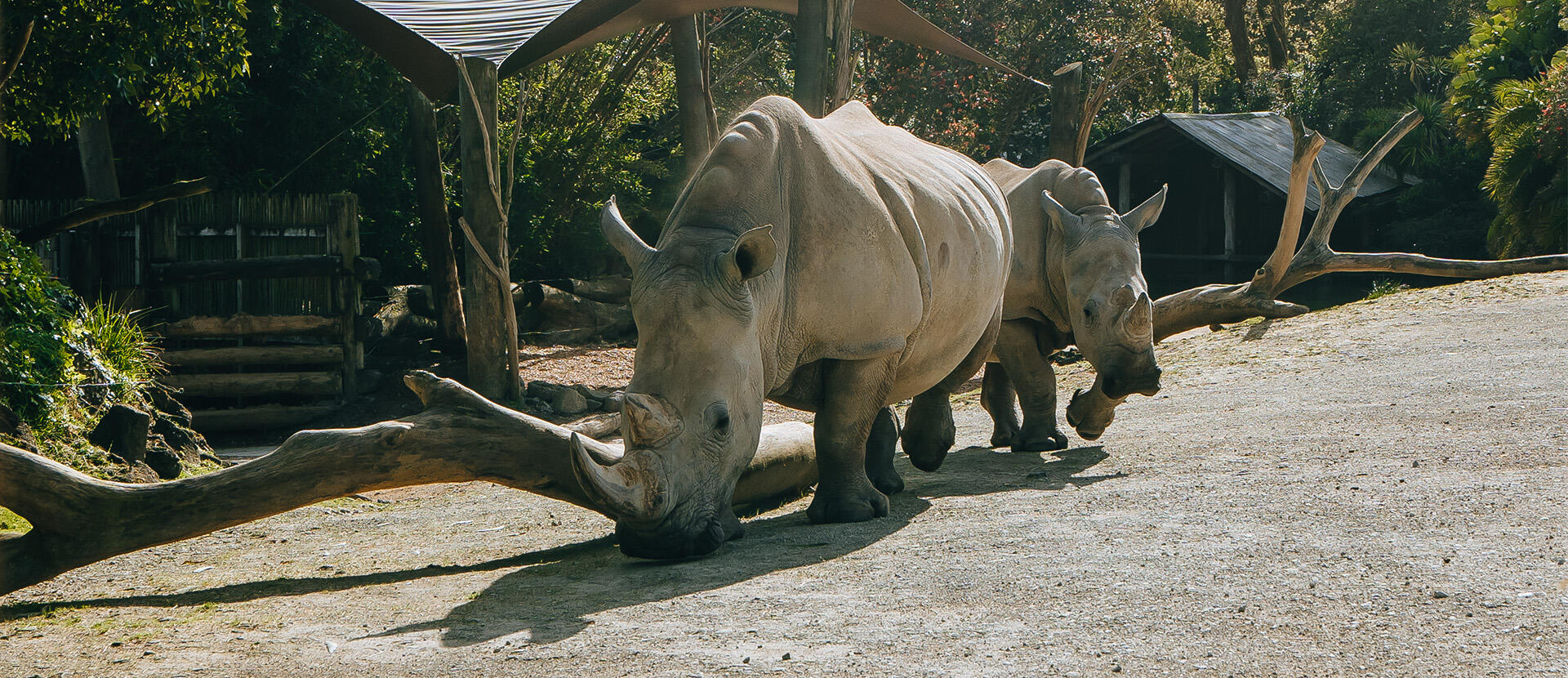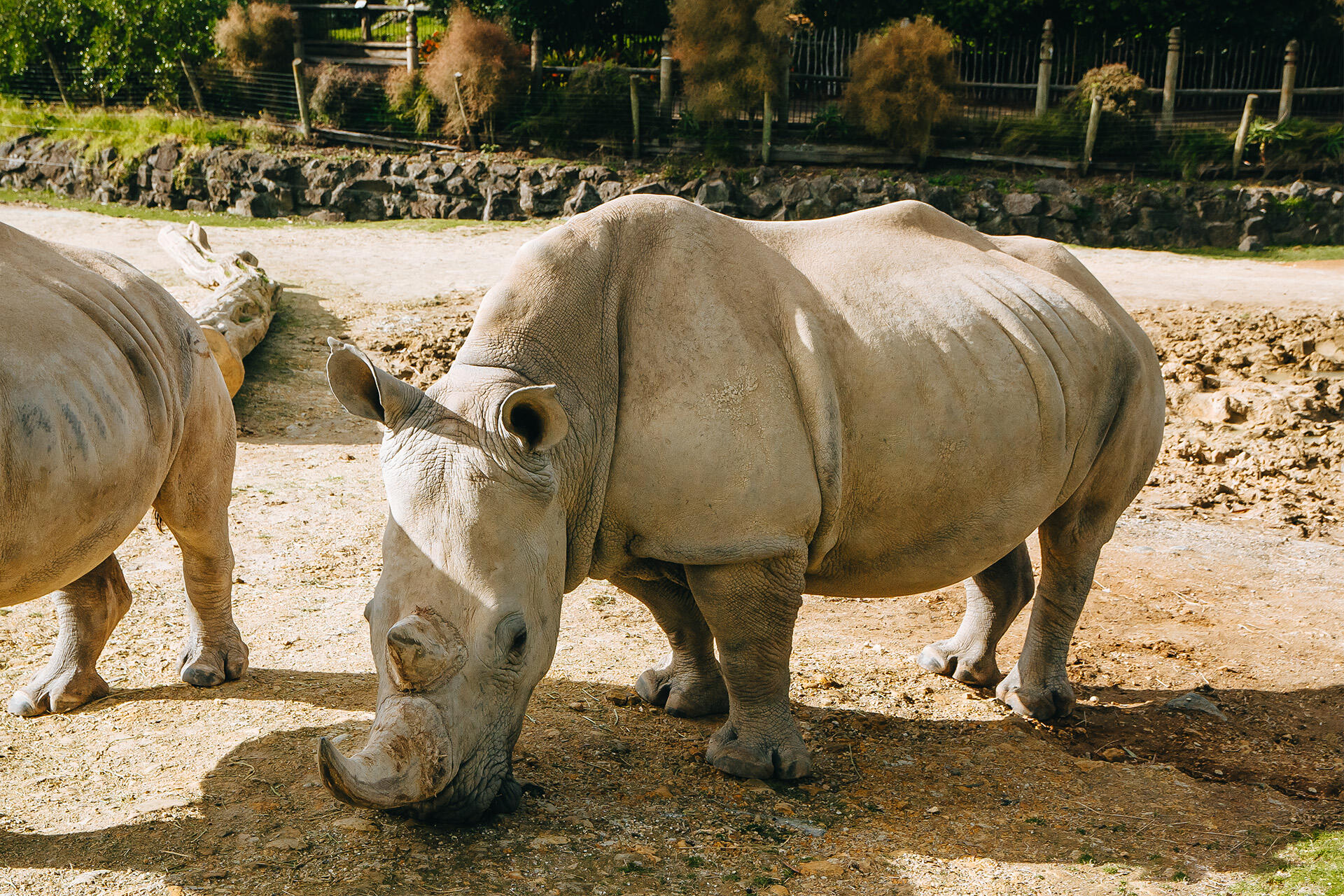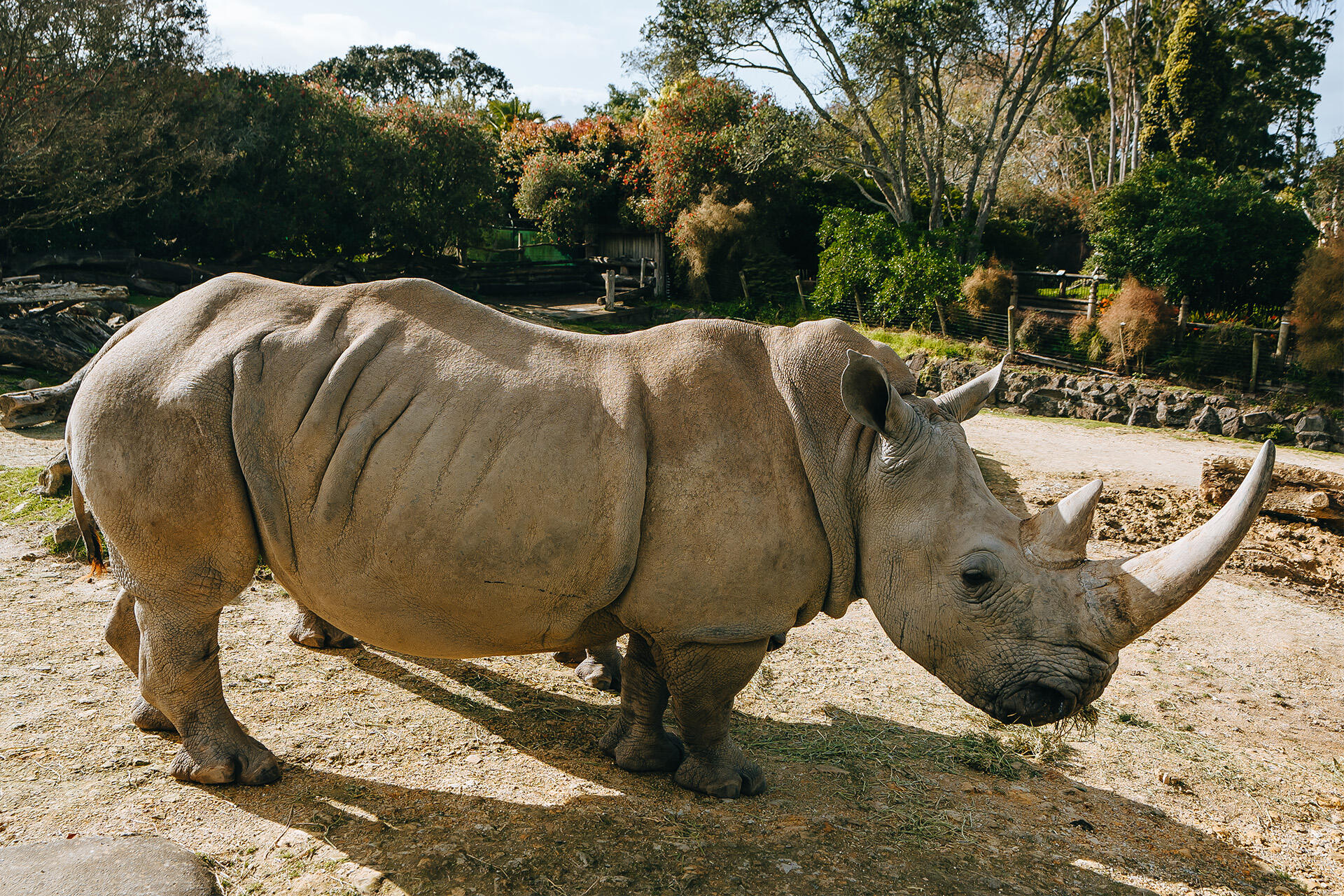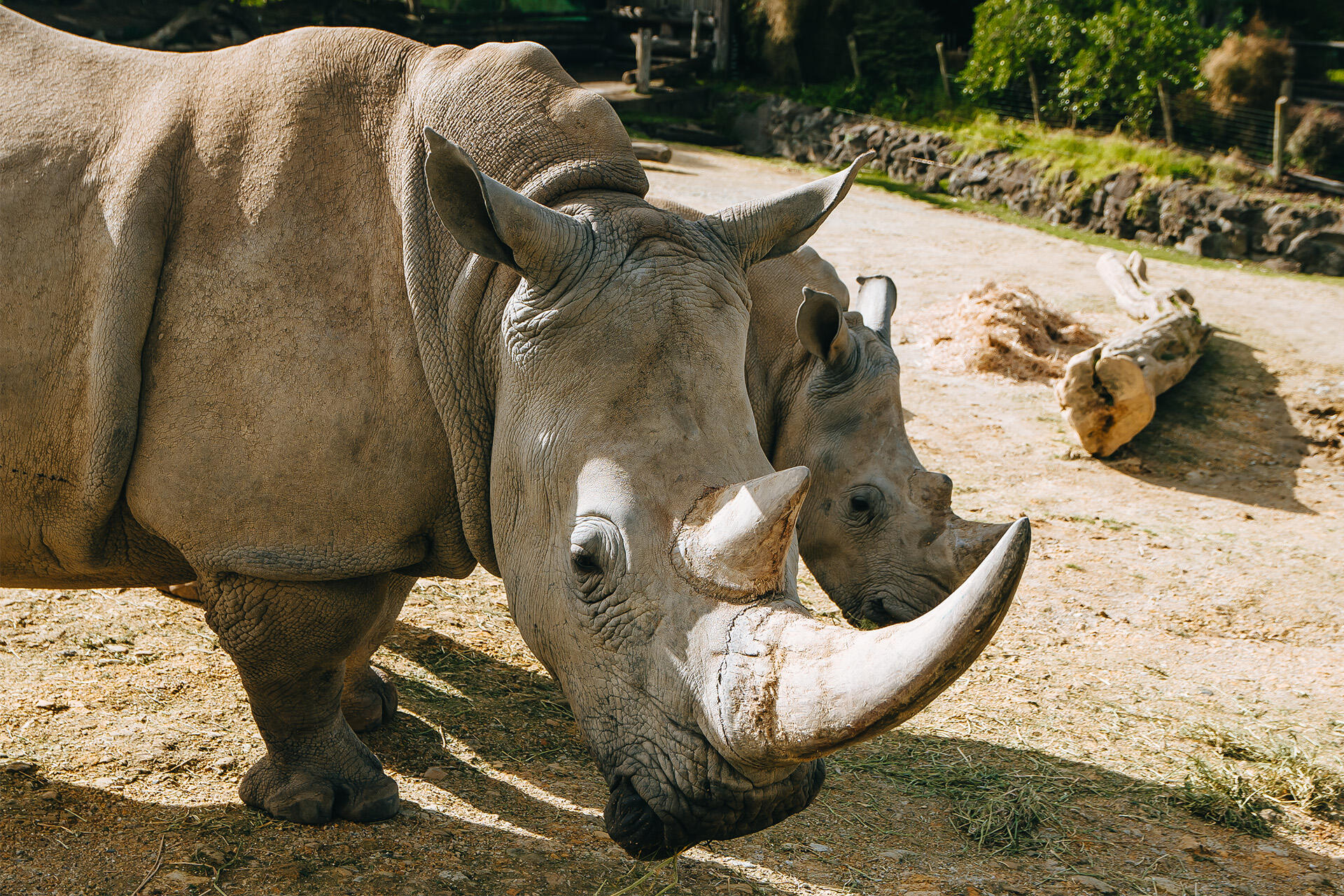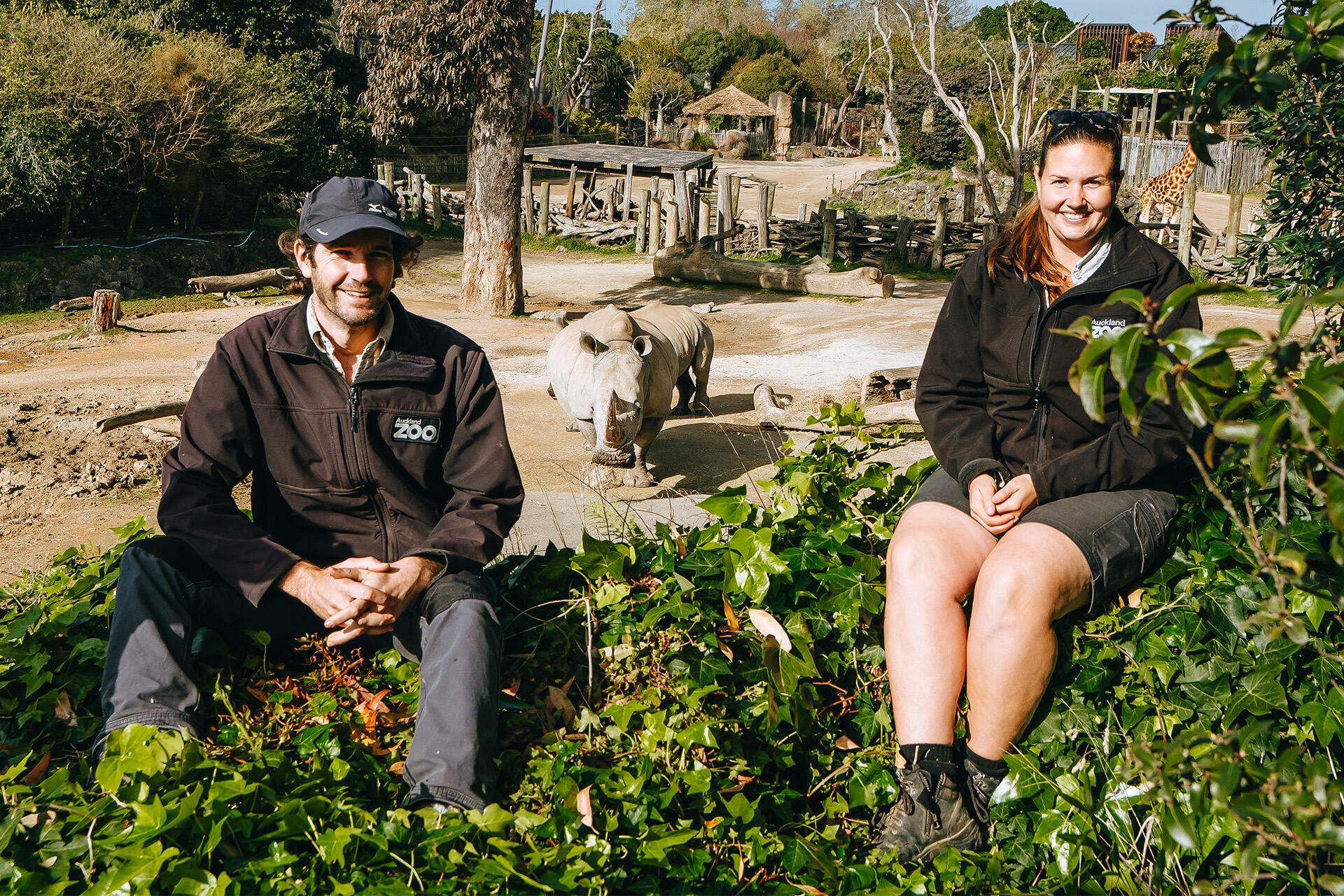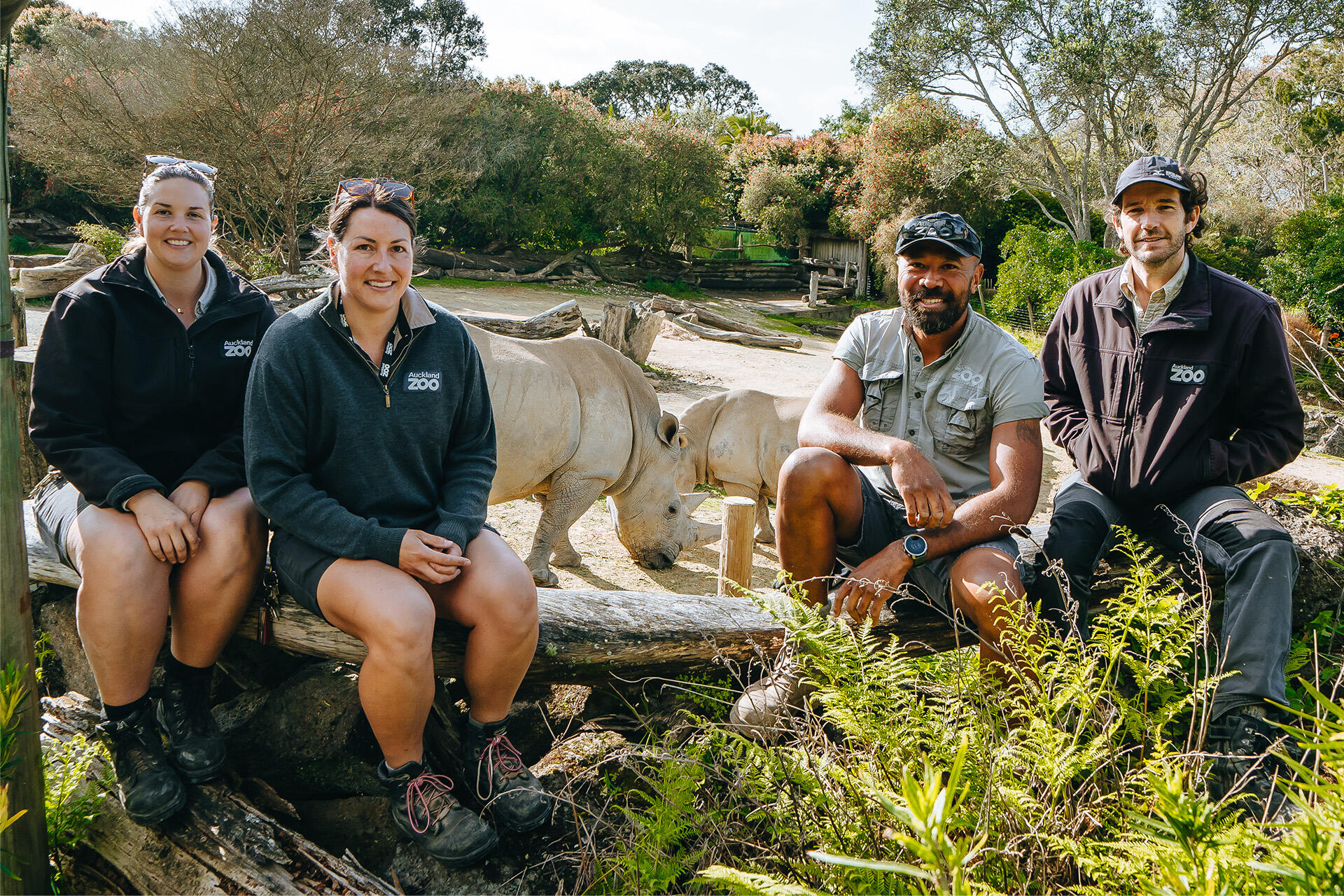“For a short period each day, Amali is having some dedicated time just with her older sister Nyah to enable her to gradually get used to a little less Jamila attention, who will naturally be very focused on nurturing her newborn come November,” explains Jess.
At four years of age and now matured to the stage where she is cycling, Nyah no longer hangs out with dad Zambezi – but visitors will also see her out in the Africa Safari Track with Jamila. In time, as part of the regional breeding and advocacy programme for rhino, as a valuable female, Nyah will be relocated to another accredited zoo within Australasia.
Southern white rhino (classified as ‘Near Threatened’/IUCN Red List) are something of a conservation success story having recovered from near extinction in the early 1900s. However, today their population is in decline – primarily due to illegal poaching for their horns (for ‘medicinal’ and craft purposes), as well as habitat loss and political unrest.
“Physically and behaviourally, rhino – our planet’s second largest land mammal - are such unique and fascinating animals. As a keystone species, they contribute so much to the ecosystems in which they live – from wallowing in the mud to create watering holes, to spreading nutrients via their dung to benefit so many other species, so we need to help ensure their future.
“As ungulate keepers, we love that our visitors can experience rhino here at the Zoo. In recent years, with the births of Nyah and Amali, there’s been incredible opportunities to follow their growth and development and watch them play and interact with each other and Jamila and Zambezi. All going well with this next birth, there’ll soon be even more to experience,” says Jess.


